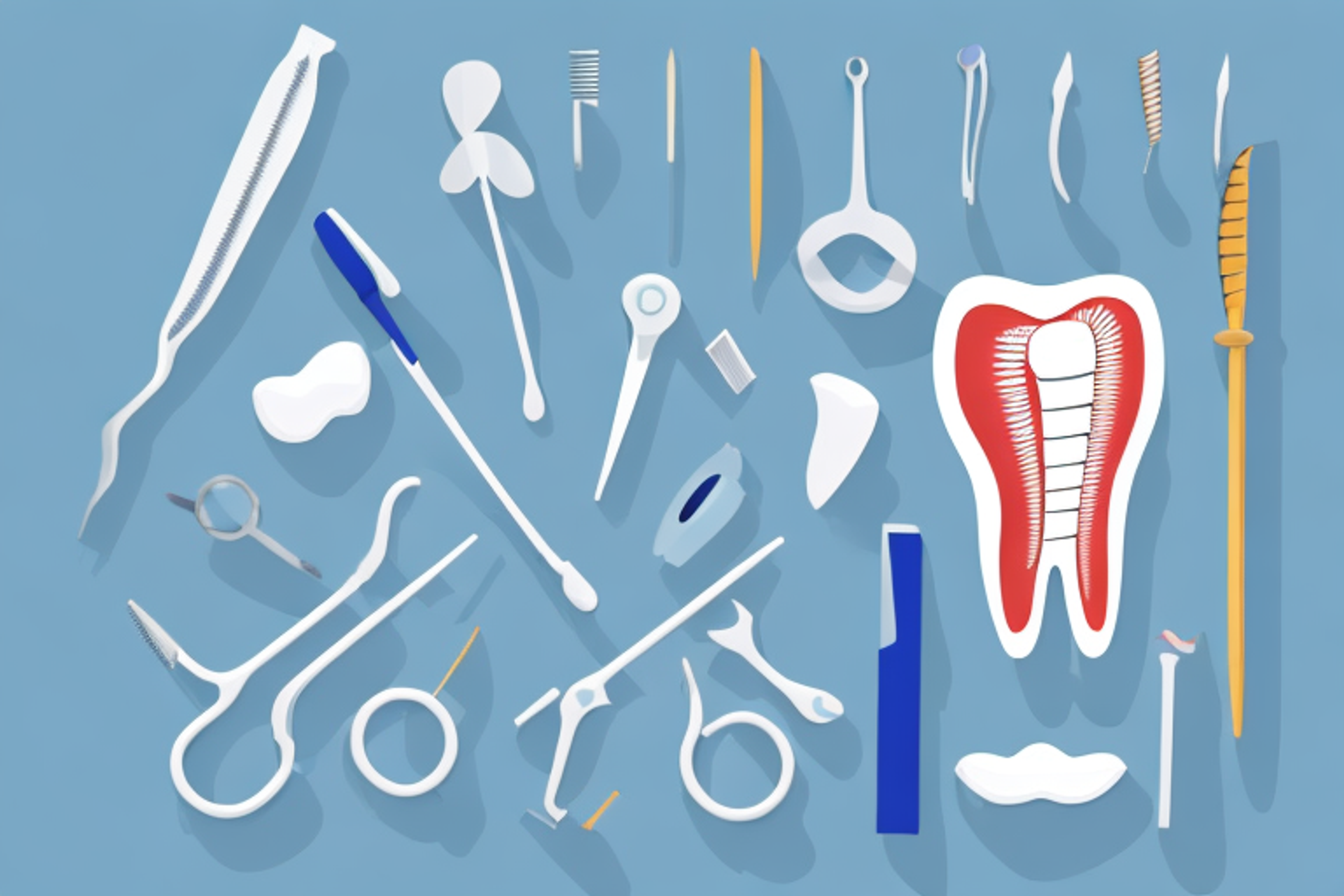Orthodontist Schooling: A Complete Guide to Becoming an Orthodontist
Discover everything you need to know about orthodontist schooling and how to become an orthodontist in this comprehensive guide.
Posted April 10, 2025

Table of Contents
Are you interested in a career as an orthodontist? This field offers many exciting opportunities for those who enjoy working with people and have an interest in medical science. In this comprehensive guide, we'll explore the education requirements, clinical experience, certification process, and job prospects for becoming an orthodontist.
What is an Orthodontist?
An orthodontist is a dental specialist who focuses on the diagnosis, prevention, and treatment of dental and facial irregularities. This involves the use of braces, retainers, and other orthodontic appliances to straighten teeth, correct bites, and improve oral and facial health. Orthodontists typically work in private practices or clinics, and collaborate with other dental professionals to meet the needs of their patients.
Orthodontic treatment can have a significant impact on a person's self-esteem and confidence. By improving the appearance of their smile, orthodontic patients often report feeling more comfortable in social situations and having a more positive outlook on life. Additionally, orthodontic treatment can also improve a person's overall oral health by making it easier to clean their teeth and reducing the risk of tooth decay and gum disease.
Education Requirements for Orthodontists
To become an orthodontist, a rigorous educational path is required. The following sections will detail all the steps involved in pursuing a career in orthodontics.
The first step in becoming an orthodontist is to obtain a bachelor's degree in a related field such as biology, chemistry, or physics. This typically takes four years of study at an accredited university or college.
After completing a bachelor's degree, aspiring orthodontists must attend dental school for an additional four years. During this time, they will study anatomy, physiology, pharmacology, and other related subjects. They will also receive hands-on training in diagnosing and treating dental problems.
Undergraduate Education for Aspiring Orthodontists
Before entering dental school, aspiring orthodontists must complete an undergraduate degree, preferably in a science-related field like biology or chemistry. A strong foundation in these subjects will be critical to doing well in dental school, where concepts in the life sciences are emphasized.
Additionally, many dental schools require applicants to have completed certain prerequisite courses during their undergraduate studies, such as anatomy, physiology, and microbiology. It is important for aspiring orthodontists to research the specific requirements of the dental schools they are interested in attending and plan their undergraduate coursework accordingly.
Graduate School Options for Future Orthodontists
After completing an undergraduate degree, aspiring orthodontists will need to attend an accredited dental school to obtain a Doctor of Dental Medicine (DMD) degree.
Once a DMD degree is obtained, future orthodontists have the option to pursue a residency program in orthodontics. These programs typically last 2-3 years and provide specialized training in orthodontic treatment. During the residency, students will have the opportunity to work with patients under the supervision of experienced orthodontists and gain hands-on experience in the field. After completing a residency program, orthodontists may choose to pursue additional certifications or specializations to further enhance their skills and knowledge.
Admission Process and Requirements for Dental School
Admission to dental school is highly competitive, and the application process can be long and demanding. Applicants are evaluated on the basis of their GPA, Dental Admissions Test (DAT) scores, letters of recommendation, and experience in dentistry or related fields. Once admitted to dental school, students should expect rigorous coursework in a range of subjects, including anatomy, physiology, pathology, and dental pharmacology.
It is important for applicants to also have strong communication and interpersonal skills, as dentists must work closely with patients and other healthcare professionals. Many dental schools also require applicants to have completed prerequisite courses in biology, chemistry, and physics. In addition to academic qualifications, dental schools may also consider an applicant's personal qualities, such as leadership, community service, and cultural competency.
During dental school, students will also gain hands-on experience through clinical rotations and externships. These experiences allow students to work with real patients under the supervision of licensed dentists, and to apply the knowledge and skills they have learned in the classroom. After completing dental school, graduates must pass a licensing exam in order to practice dentistry in their state.
Dental School Curriculum and Specialization in Orthodontics
After students complete their foundational coursework, they'll begin to specialize in orthodontics. This process typically takes two to three years and involves both didactic and clinical training. During this time, students learn aboutthe mechanisms behind orthodontic treatments, including braces, clear aligners, and retainers. They'll also learn how to diagnose complex malocclusions and develop personalized treatment plans for patients.
In addition to learning about orthodontic treatments, students in dental school also receive training in other areas of dentistry, such as periodontics, endodontics, and oral surgery. This broad-based education allows them to provide comprehensive care to their patients and make informed decisions about treatment options.
After completing their orthodontic specialization, many dentists choose to pursue additional training in sub-specialties such as surgical orthodontics or craniofacial orthodontics. These areas of focus require additional education and training beyond the standard orthodontic curriculum, but can provide dentists with the skills and knowledge needed to treat more complex cases.
Clinical Experience and Residency Program in Orthodontics
During the clinical experience portion of their training, students work under the supervision of experienced orthodontists, honing their skills and developing their professional competencies. After graduating from dental school, aspiring orthodontists will need to complete a two to three-year residency program in orthodontics. During this time, they'll gain the necessary hands-on experience to become proficient in all aspects of orthodontic treatment.
Additionally, during their residency program, orthodontic residents will also receive training in the latest technological advancements in the field. This includes learning about new orthodontic appliances, such as clear aligners and lingual braces, as well as digital imaging and treatment planning software. By staying up-to-date with the latest techniques and technologies, orthodontists can provide their patients with the most effective and efficient treatment options available.
Getting Certified as an Orthodontist: Licensing and Exams
After completing their education and residency, aspiring orthodontists must obtain a state license to practice. Requirements for licensure vary by state, but generally include passing a state board exam. In addition, many orthodontists choose to obtain certification through the American Board of Orthodontics (ABO). The ABO certification process involves a written exam, case evaluation, and oral exam, and is considered the standard for professional excellence in the field of orthodontics.
It is important to note that obtaining certification through the ABO is not a requirement for practicing as an orthodontist, but it can provide numerous benefits. ABO certification demonstrates a commitment to the highest standards of patient care and can enhance professional credibility. Additionally, many insurance companies and patients may prefer to work with certified orthodontists. Overall, obtaining ABO certification can be a valuable investment in an orthodontist's career.
Advanced Training and Continuing Education Opportunities for Orthodontists
Orthodontists who wish to deepen their knowledge and clinical skills may choose to pursue advanced training through fellowships or other postgraduate programs. Additionally, continuing education courses and seminars are available to orthodontists throughout their careers, keeping them up-to-date on the latest techniques, technology, and best practices in orthodontics.
Some advanced training programs for orthodontists include orthodontic research fellowships, which allow orthodontists to conduct research in a specific area of orthodontics. Other programs may focus on specific techniques, such as lingual braces or clear aligners. These programs typically require a significant time commitment and may involve a combination of coursework, clinical experience, and research.
Skills Required to Become a Successful Orthodontist
Successful orthodontists possess excellent communication skills, a keen attention to detail, and a strong commitment to patient care. The ability to work well under pressure, manage complex cases, and collaborate with other dental professionals is also critical to success in this field.
In addition to these essential skills, successful orthodontists must also stay up-to-date with the latest advancements in orthodontic technology and techniques. This requires a dedication to continuing education and a willingness to adapt to new methods of treatment. Additionally, a strong business acumen is necessary for those who wish to run their own orthodontic practice, as it involves managing finances, marketing, and staff.
Job Outlook and Salary Potential for Orthodontists
According to the Bureau of Labor Statistics, employment of orthodontists is expected to grow 7% from 2019 to 2029, faster than the average for all occupations. Additionally, the median annual salary for orthodontists in 2020 was $208,000, according to the same source.
One of the reasons for the projected growth in employment for orthodontists is the increasing demand for orthodontic treatment among adults. As more adults seek orthodontic treatment to improve their dental health and appearance, the need for orthodontists is expected to rise.
Furthermore, advancements in orthodontic technology and techniques are also contributing to the growth in employment opportunities for orthodontists. Newer technologies such as clear aligners and digital imaging systems are making orthodontic treatment more accessible and convenient for patients, which is driving up demand for orthodontic services.
Building a Successful Career as an Orthodontist
Becoming an orthodontist requires a significant investment of time and resources, but for those who are passionate about this field, it can be a fulfilling and rewarding career. Whether you're just starting your education or have years of experience as a practicing orthodontist, staying up-to-date on the latest trends, techniques, and best practices in the field is essential to building and maintaining a successful career.











